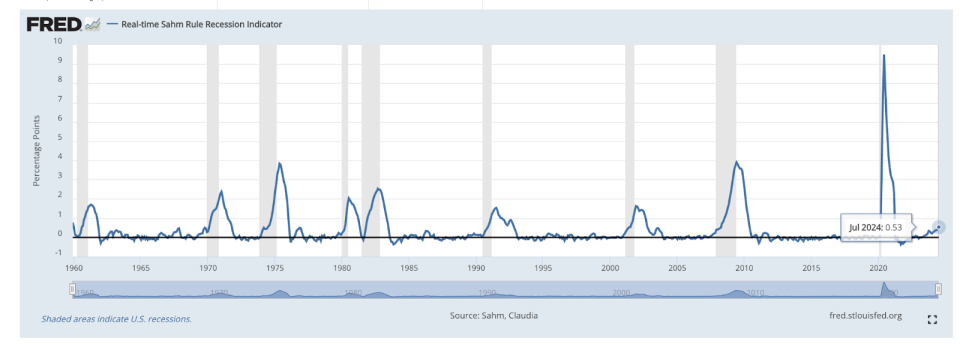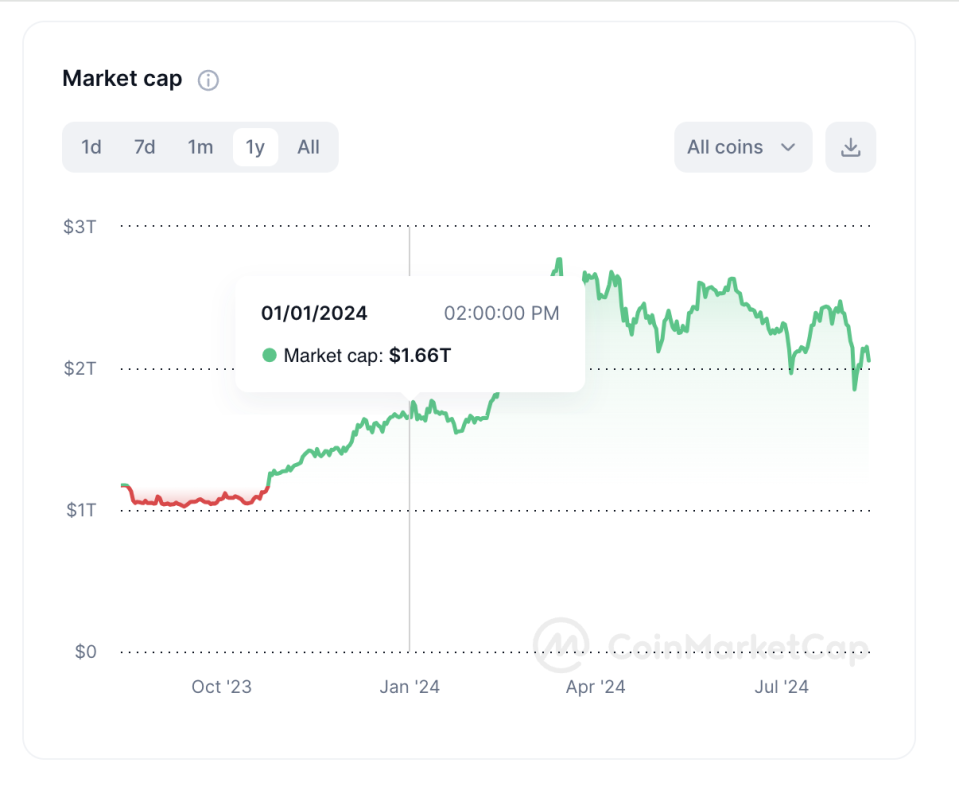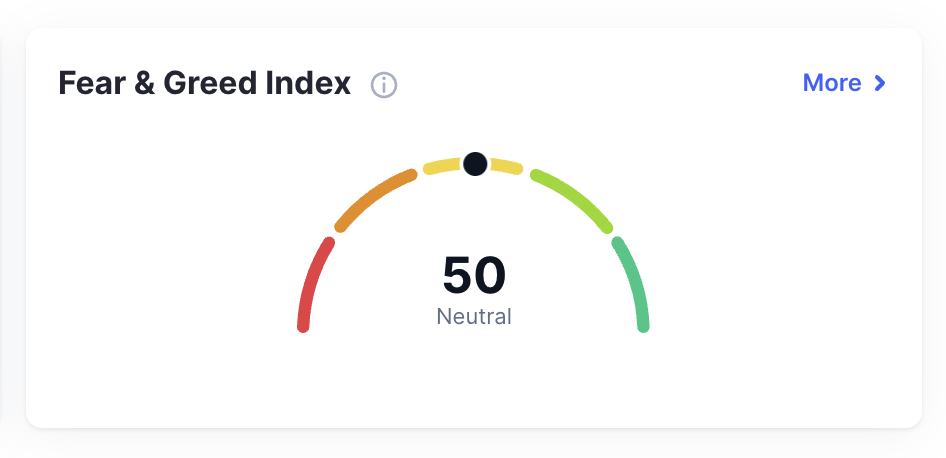
Crypto never disappoints.
Bitcoin’s been on a wild journey these past 12 days, leaving us all confused.
One day it’s soaring, the next it’s nosediving. Rinse and repeat.
For day traders, it must’ve become a full-time job.
Exhilarating? Maybe. Frustrating? Definitely.
But let’s be real – this volatility is why crypto is loved worldwide, right?
So let’s dive deep into all the price action, indicators, and events that have shaken up crypto in the past 24 hours.
And here’s your TLDR:
-
Indicator suggests Bitcoin might be eyeing a comeback. But how accurate is this tool?
-
🚀
-
Celsius is taking Tether to court over $3.5 billion. What kind of trouble is Tether in? 🧑⚖️
-
Ripple’s launching a new stablecoin. And what sets it apart from USDT? 💰
-
Japan’s central bank is keeping things steady. But opposition is going strong… more volatility incoming? 🇯🇵
-
You can now get paid to make meme coins. But how much? 🤑
Plus, we’ll serve a quick analysis of what’s been happening in the market and what might be coming next.
Before you we begin, take a sec to sign up for our newsletter below, and become the first ones to receive alphas straight to your inbox!
Let’s dive in!
Bitcoin’s Bottom? Signs Point to Potential Rebound
Seems like Bitcoin might be gearing up for a comeback.
After the early August dip, some interesting signals are catching the eye of crypto analysts. CryptoQuant’s latest data suggests we might have hit a “local bottom,” but let’s not get ahead of ourselves just yet.
The tool they’re using is called NVT-GC. It’s a way to compare Bitcoin’s market cap to its transaction value over time.
Right now, it’s hinting at a possible rebound.
But is this tool totally accurate? Has it historically performed well? Read the full story!
Tether in Trouble?
The crypto world’s got a new legal drama on its hands.
Celsius, the bankrupt crypto platform, is taking Tether to court over a $3.5 billion dispute.
Here’s the deal: Celsius borrowed a bunch of USDT from Tether, using Bitcoin as collateral. When Bitcoin’s price took a dive, things got messy.
Celsius claims Tether jumped the gun, liquidating their Bitcoin without giving them a chance to add more collateral.
Tether’s calling the lawsuit a “shake down” and insisting they played by the rules.
According to them, Celsius knew the score and even gave the go-ahead for the liquidation.
So, if Celsius manages to score a victory, what kind of setbacks can Tether face apart from the hefty fine? Read the full story!
Ripple’s New Stablecoin Enters the Chat
Ripple just kicked off private beta testing for their new creation, Ripple USD (RLUSD).
It’s a big move for the company, aiming to tackle the growing demand for stablecoins and smooth out cross-border payments.
Right now, RLUSD is getting its test run on Ripple’s home turf, the XRP Ledger, and also on Ethereum.
Ripple’s got plans to spread RLUSD to other blockchains and DeFi protocols down the line.
But when is it gonna launch officially? And what sets it apart from USDT? Read the full story!
A Yen for Stability
The Bank of Japan (BOJ) might be taking a breather after their recent rate hike surprise.
Former board member Makoto Sakurai is betting they’ll keep things steady for the rest of the year.
The unexpected rate bump in early August sent markets into quite a spin. Stocks took a hit and the yen suddenly became the most popular trading opportunity at the currency exchange. The USD/JPY rate dropped sharply, making those low-interest yen loans a lot less appealing.
Crypto felt the impact too, with the total market cap shedding over $500 billion in a matter of days.
The BOJ’s Deputy Governor is promising no more surprises during unstable times. But not everyone’s on board. Japan’s opposition party is eager to question the BOJ governor and finance minister.
So where is this debate heading? Are we going to see more rate hikes, hence more volatility in the global financial markets, including crypto? Read the full story!
Get Paid to Make Meme Coins
The meme coin world just got a little more interesting.
Pump.fun, the platform where meme dreams come true, has rolled out a new update that’s getting a lot of attention.
Here’s the scoop: They’ve ditched the launch fee and are now offering a sweet 0.5 SOL (about $79) reward for successful token launches.
Previously, meme coin creators had to cough up 0.02 SOL and hit a $69,000 market cap to get their coin trading on Raydium.
Now? It’s free to launch, and if your coin completes its bonding curve, you’re looking at a payday.
But is 0.5 SOL going to impact the rug pull rate in the meme coin world? Read the full story!
And a Quick Analysis…
One word to sum up last week in crypto: WILD.
Let’s dive into what’s really going on.
First up, the Sahm rule.


Source: FRED
The Sahm rule, created by economist Claudia Sahm, is raising eyebrows in the financial world. Here’s the deal: when the 3-month average unemployment rate rises half a percentage point above its 12-month low, it’s historically signaled a recession.
As of August 2024, we’ve hit that 0.5% increase, with the indicator showing 0.53%.
Is the recession bound to happen?
Historically speaking, only once this indicator falsely indicated the beginning of a recession (back in 1959).
But here’s the thing – while the Sahm rule is waving a red flag, other economic indicators aren’t joining the recession chorus just yet.
Now, let’s talk about the elephant in the room: Bitcoin. Despite the recent turbulence, BTC is still up year-to-date.
In fact, the total crypto market cap started 2024 at $1.66 trillion, so we’re still in positive territory overall (currently standing at $2.05T).


Source: CoinMarketCap Live Charts
It’s a reminder that sometimes you need to zoom out to see the bigger picture.
Ethereum, on the other hand, has been facing some unique challenges.
With Grayscale’s ETHE fund seeing significant outflows and Jump Crypto offloading large amounts of ETH, there’s been consistent selling pressure.
But this pressure might not last much longer. Once these big players finish their sell-offs, we could see ETH regain some ground.
Speaking of regaining ground, let’s not forget about Solana.
While most cryptocurrencies were taking a beating, SOL was enjoying the moment, showing impressive strength against ETH. Lesson: not all cryptocurrencies move in lockstep.
But what about the broader economic picture?
The Fed’s potential rate cuts are generating buzz. The market is pricing in a high probability of multiple rate cuts by the end of the year. Historically, when the Fed starts cutting rates, it’s often good news for risk assets like crypto. (NFA)
And here’s something to keep an eye on – global liquidity. The U.S. Treasury Buyback Program is about to inject $50 billion into the markets over the next three months. This kind of liquidity boost has typically been bullish for Bitcoin in the past.
Lastly, let’s consider market sentiment.


The CMC Crypto Fear and Greed Index, which gives us a real-time pulse of the entire crypto market, shows we’re in a “neutral” zone.
We’ve climbed out of the “fear” territory we were in just a few days ago.
So what should you do?
In times like these, it’s crucial to stay informed but not overreact.
Keep a close eye on those liquidity injections and how they might impact the market.
If you’re holding ETH, be aware that the selling pressure might ease up soon, which could present opportunities (DYOR).
Remember, the crypto market is known for its volatility. While it’s tempting to make moves based on short-term price swings, focusing on long-term trends and fundamentals often yields better results. And as always, never invest more than you can afford to lose.




